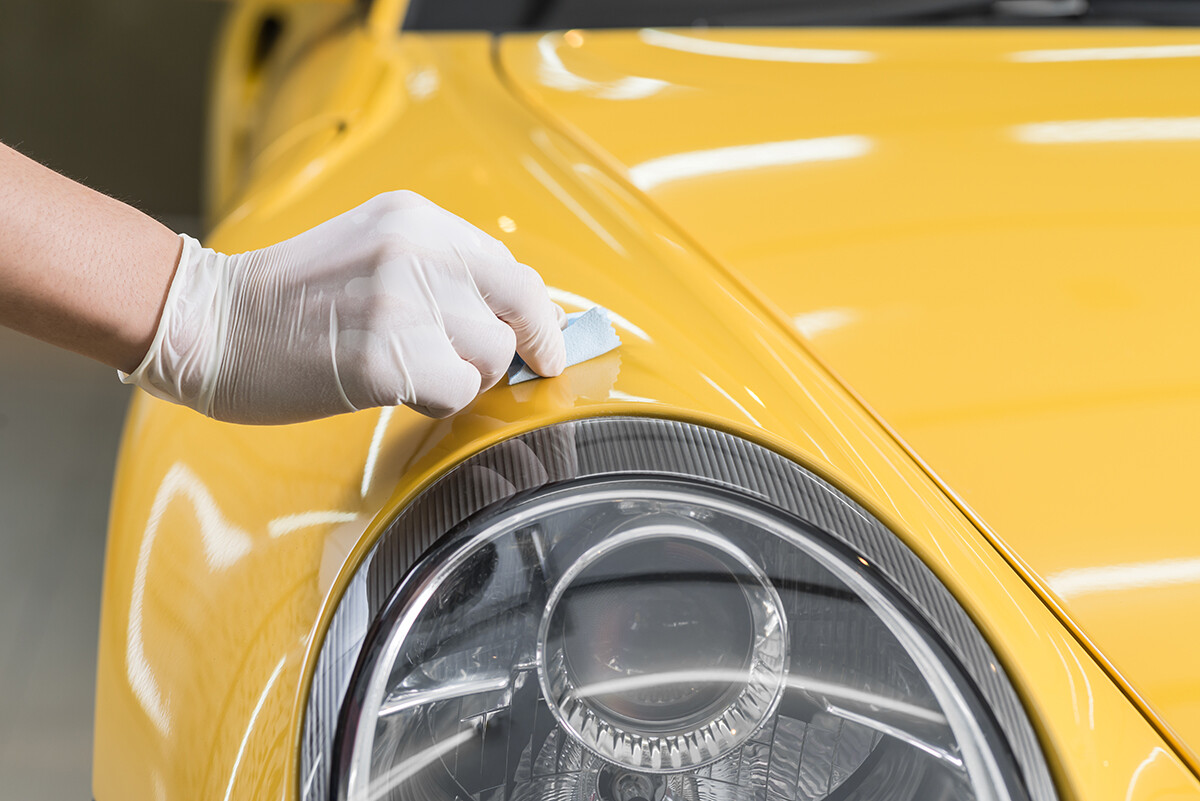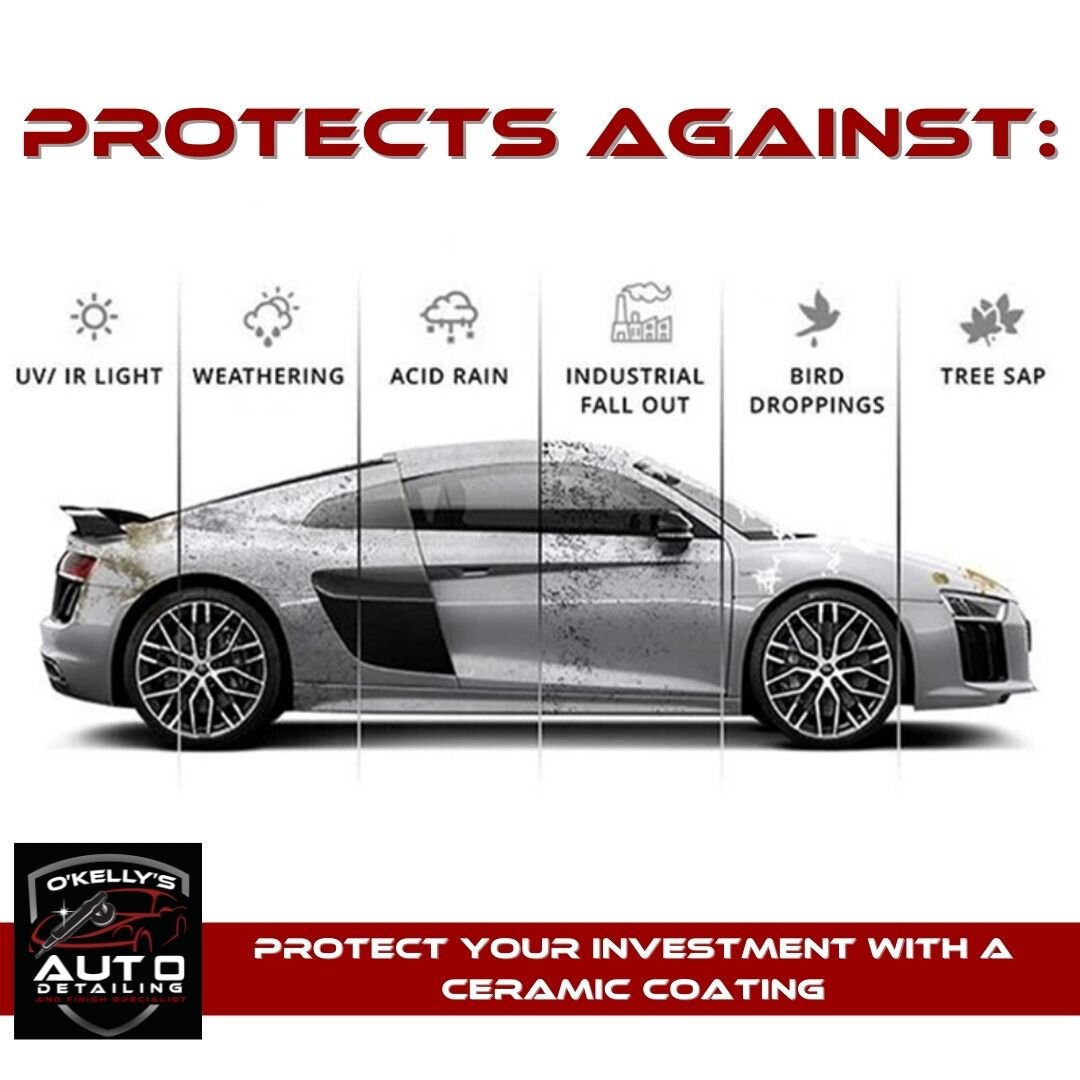Get the most effective Ceramic Coatings San Jose for Maximum Paint Security
Get the most effective Ceramic Coatings San Jose for Maximum Paint Security
Blog Article
Introducing the Science Behind Ceramic Coatings: Exactly How Does It Job and Why Is It Above Standard Choices?
Ceramic coatings have actually been gaining popularity in numerous sectors for their phenomenal efficiency and toughness. Recognizing exactly how ceramic finishings work and why they outperform conventional alternatives is vital for those looking for to enhance the long life and resilience of their materials.
The Chemistry of Ceramic Coatings
In recognizing ceramic finishes, delving right into the elaborate chemistry behind their make-up is crucial for comprehending their functionality and durability. Ceramic finishes are mainly made up of silicon dioxide (SiO2), which forms a solid and protective layer when applied to various surfaces. This chemical framework offers exceptional resistance to warmth, chemicals, and deterioration, making ceramic finishes highly demanded for a large range of applications.
The chemistry behind ceramic coatings involves the formation of covalent bonds in between silicon and oxygen atoms, producing a rigid network that improves the covering's toughness and longevity. Additionally, the existence of other elements such as titanium, light weight aluminum, and zirconium more enhances the finishing's residential properties, offering raised firmness and attachment to surface areas.
Understanding the chemical structure of ceramic finishes enables the modification of formulations to suit particular requirements, whether it be for auto, industrial, or household objectives. By taking advantage of the power of chemistry, ceramic finishings remain to pave the method for remarkable defense and performance in numerous industries.
Benefits of Ceramic Coatings

Another substantial advantage of ceramic coatings is their hydrophobic nature. This residential property causes water to grain up and roll off the covered surface area, bring dirt and impurities with it. Therefore, ceramic coverings make cleansing and preserving surface areas much simpler and much less lengthy. Furthermore, ceramic layers offer improved gloss and color deepness, giving surface areas a glossy and lively appearance. In general, the wide range of advantages offered by ceramic finishes make them an exceptional alternative contrasted to standard finishing approaches.
Exactly How Ceramic Coatings Bond
Ceramic layers bond to surface areas via a process that involves molecular adhesion and chemical interactions. When a ceramic finishing is put on a surface, it develops a strong bond by chemically adhering to the surface at a molecular level. This bond is produced through the formation of covalent bonds, which are incredibly strong and resilient. The ceramic finishing's particles permeate the pores of go to website the surface, producing a tight grip that resists separation.
Additionally, the chemical communications between the ceramic layer and the surface further boost the bond. ceramic coatings san jose. These communications enable the ceramic layer to develop a smooth and constant layer on the surface area, offering excellent protection and durability. Unlike standard layers that might remain on the surface area without completely bonding, ceramic coverings create a long-term bond that is resistant to chemicals, UV rays, and extreme ecological conditions

Basically, the bonding device of ceramic layers guarantees a effective and resilient protective layer that outperforms traditional layer alternatives. This exceptional bond adds to the longevity, scratch resistance, and durability of ceramic coatings, making them a recommended option for numerous applications.
Toughness of Ceramic Coatings
The extraordinary longevity of ceramic finishes originates from their robust molecular attachment and chemical interactions with surface areas, guaranteeing a sturdy protective layer that goes beyond standard coating options. As soon as applied, ceramic finishings create a strong bond with the substratum, developing a resilient obstacle against numerous environmental stress factors such as UV radiation, chemicals, and abrasions. This bond is so secure that it can hold up against the rigors of everyday usage without weakening or breaking down quickly.
Unlike typical finishings that might weaken over time, ceramic coatings keep their honesty for an More hints extensive period, offering resilient security for the underlying surface area. Overall, the remarkable resilience of ceramic layers makes them a superior selection for shielding a large range of surface areas in numerous applications.
Ceramic Coatings Vs. Conventional Options
In official website comparison to traditional layer methods, ceramic coverings use a distinct mix of resilience and protective abilities that set them apart in different surface area security applications. Standard alternatives such as wax or sealers give a momentary layer of defense that can wear away quickly, requiring frequent reapplication. On the various other hand, ceramic coverings develop a strong bond with the surface area, creating a permanent or semi-permanent obstacle that is very immune to abrasion, chemicals, UV rays, and severe temperatures.
In addition, ceramic layers supply premium hydrophobic homes compared to conventional coverings. The hydrophobic nature of ceramic coverings triggers water to grain up and roll off the surface area, bring dirt and impurities with it. This self-cleaning effect helps to maintain the surface area's tidiness and gloss for prolonged periods, lowering the requirement for regular upkeep.
Furthermore, ceramic finishings have a thicker layer compared to typical options, providing improved scratch resistance and defense versus minor effects. This longevity makes sure durable efficiency and aids preserve the aesthetic allure of the treated surface area for an extensive duration.
Final Thought
In conclusion, the scientific research behind ceramic finishings lies in their chemical structure and bonding properties, making them premium to standard options. The benefits of ceramic coatings consist of raised durability and security for surface areas. By understanding just how ceramic coverings job and their advantages over traditional alternatives, one can make educated choices when thinking about layer options for numerous applications.
Unlike traditional finishes that might sit on the surface without completely bonding, ceramic layers produce a permanent bond that is immune to chemicals, UV rays, and rough environmental conditions.
The remarkable long life of ceramic coverings stems from their robust molecular bond and chemical communications with surface areas, ensuring a resilient safety layer that goes beyond traditional finishing choices.Unlike traditional coverings that might weaken over time, ceramic coatings maintain their stability for a prolonged period, offering resilient security for the underlying surface area.In contrast to traditional finish approaches, ceramic layers use an unique mix of longevity and safety capacities that establish them apart in numerous surface area defense applications. By comprehending exactly how ceramic coverings job and their benefits over typical alternatives, one can make enlightened decisions when thinking about finishing options for various applications.
Report this page